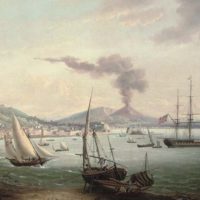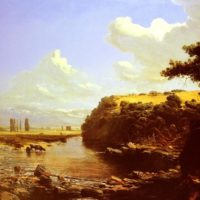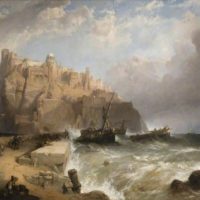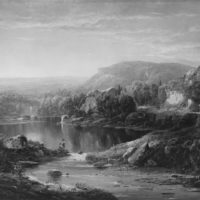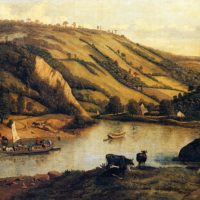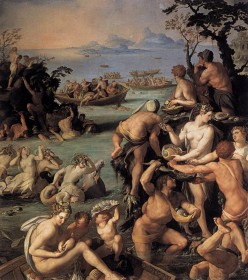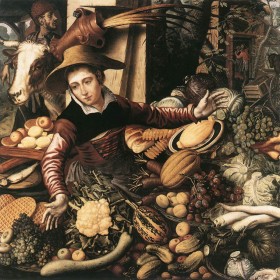Genre Painting Archive
The Studiolo is a tiny chamber in the Palazzo dei Priori (Palazzo Vecchio), accessible by a hidden spiral staircase. It was dedicated to the geological, mineralogical and alchemical interest of Francesco I de’ Medici, son and successor of Cosimo I. Its walls are lined with two tiers of oil paintings on slate or panel that act as doors for cupboards containing Francesco’s scientific books, specimens, and instruments. Alessandro Allori’s contributions to the decoration of the Studiolo in the Palazzo Vecchio included the Pearl Fishers. Allori was the follower of Agnolo Bronzino, and his style imitates the cool, smooth manner of his teacher. Exquisite male and female nudes, human and mythological, play about on rocks, dive off boats, and bring up shells overflowing with seawater and […]
In 1621, Ferdinando Gonzaga, the Duke of Mantua, commissioned a series of The Story of Venus for his Villa Favorita. Completed in 1633, these pictures are enlarged versions of the round compositions of a cycle formerly executed for the prince Borghese towards 1615-17. The Cupids Disarmed belongs to the series.
One of the several one-figure compositions of the artist painted in the 1560s and showing the influence of the Italian painting transferred to the Low Countries by the Romanists.
Pieter Aertsen was a Dutch painter who had a workshop in Antwerp for several years. He painted altarpieces, but also peasant scenes with a moralizing undertone and kitchen still-lifes with religious themes in the background. He continued this work following his return to Amsterdam in around 1557, concentrating henceforth more on the latter genre. This painting may have been produced during his Amsterdam period. The subject of the work has long been debated, although we can be sure it is not simply a peasant scene. it was once believed to be a portrait of the artist’s family, but that hypothesis was rejected some time ago. The scene has all the elements of a rural booze-up. Much drink is being consumed, sausages grilled and bacon fried. […]
The painting comes from Ghent’s Abbey of St Peter, where it hung over the fireplace in the kitchen. This monumental painting, with its realistically represented fish, shellfish and crustaceans, has a hidden moral message: distracted by the abundance of good things and their amorous thoughts, the principal figures fail to notice the cutpurse as he surreptitiously goes about his business.
1816 Fresco Room of the Ark, Galleria Palatina (Palazzo Pitti), Florence This scene is a detail of the fresco cycle in the Room of the Ark. This shows the preparation of a Jewish festivity that is about to take place under a tentlike structure. Baskets of bread and jars of wine are being set up for distribution to the crowds during the celebration. The display of the massive menorah, a golden candelabrum with seven arms, serves as the dominating symbol of the Jewish people.
